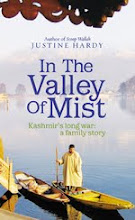Moldova, July 2008The man on the bus in Chisinau, Moldova spoke no English. He spoke in Russian, but we understood him mostly because of his pantomime. My wife Rupal had asked him to let us know when the stop for Esilor Road showed up. He managed to convey that he too was getting down there, so he’d be sure to let us know.
The reason we were heading to Esilor was that we had read in our guidebook that from there we could take a maxitaxi (a van which served as shared taxi) to the small town of Cojusna.
We had gone to the tiny country of Moldova purely on a whim. On the map, it looked very close to the cities we were visiting in Ukraine, and the lesser known ex-soviet country sounded intriguing. But once we got there after having spent a few days in Lvov and Odessa in Ukraine, we found that Chisinau was in fact quite similar to places in Ukraine, the bigger neighbor. Looking around for something more authentically Moldovan, we decided to go visit a vineyard or two. Moldova has a small but niche wine business.
Our first choice was the vineyard tour of Cricova, which is already relatively well established in the tourist circuit. The tours to Cricova, however, required advanced booking (we didn’t have time) and are somewhat expensive unless one is a serious wine aficionado. The Cricova tour caters to the well-heeled crowd, people who are happy to be ferried around in air-conditioned comfort stopping in the boutique shops for ‘wine-tasting’. They then purchase a case or two (shipped direct to their home address) and while entertaining guests back home, they’ll try and impress them by casually letting drop that they ‘picked up this wine from a neat little vineyard they found in Moldova.’
Instead, we decided to check out a lesser known place that the guidebook mentioned. Cojusna was said to have smaller vineyards, which sounded perfect for what we wanted to do. If we took a bus from Chisinau and then changed over to a minivan (
mashrutky), we could get there by ourselves.
When our bus reached the right stop, the man made sure we got down. He then pointed up a road and said, ‘Esilor.’
‘Cojusna. Minibus?’ I asked, speaking only in nouns so that he would understand.
‘Cojusna?!’ He broke into a bright smile. In sign language he let us know that he too was headed to Cojusna. He asked us to go with him, and so we walked along.
“Arabic?” he asked me. People often mistook me as someone hailing from the Middle East when I neglect my razor for more than two days.
“No, Indian,” I said.
“India! Cinema!” he said.
It has happened in quite a few places, but it always amazes me that of all things, people connect India with its movies. And this time I was hoping to avoid something that had happened to us in Turkey. Two years previously, on the very outskirts of Istanbul near the northern-most point of the Bosporus where it meets the Black Sea, an old man had spontaneously burst into an off-key rendition of “
Mera Jhoota Hai Japani” (a popular Hindi song) when he learnt that we were from India.
“Come, let’s have some coffee,” he then said pointing to a café. We had just met him a minute ago. Suspicious that he might have some ulterior motive, we politely declined and walked away. I still remember his crestfallen face which makes me believe that I had refused a genuine gesture of camaraderie. Perhaps we should have given the old man the benefit of doubt, but in my defense we had read a lot about touts in the Istanbul area.
To this man going to Cojusna I said, “Indian cinema. Amitabh Bachchan.” I was mentioning the Bollywood megastar sure that he would recognize the name. But the name didn’t even register a reaction. It wasn’t clear that he had even heard of Bachchan.
Then I remembered my exchanges with Moroccan shopkeepers. While we were traveling in Morocco, bored shopkeepers would shout out as I passed by. “Hello, Indian?” They were always young men in their late teens or early twenties. I would nod yes.
“
Baazigar! Shah Rukh Khan!” they would then shout. The movie Baazigar seemed to have been extremely popular there. I would stop and nod, though I had no interest in buying the things that they had on sale for tourists – carpets, T-shirts, colorful ceramics. They were happy to chat anyway. “India number one!” they would say.
“Morocco number one,” I’d reply, returning the compliment. That always pleased them immensely, and they’d place their right hand over their hearts and bow a little, their way of accepting my compliment. This exact same exchange was repeated over two dozen times in the few days, no matter which city’s souk we traveled through – Marrakech, Fez or Meknes.
Remembering all that, I tried the same thing with this person in Chisinau. "Cinema.
Baazigar. Shah Rukh Khan," I said. But that too didn’t ring a bell. Neither Amitabh nor Shah Rukh Khan produced even a glimmer of recognition. He thought for a while, seemed to be straining to recollect, and then he said, “Mithun!”
“Mithun Chakravorthy?” I asked, somewhat surprise. Mithun too was a Bollywood hero, but arguably, he wasn't quite in the same league as the other two stars. I hadn’t even thought of Mithun Chakravorthy in perhaps over a decade. I very rarely watch Hindi movies, so I wasn’t sure if he was still appearing in movies. The man from Cojusna nodded vigorously and beamed. We both smiled, acknowledging this rather esoteric shared pop-cultural experience though our lives and backgrounds were very different.
We had reached the place where people were boarding minivans for Cojusna. He pointed to the right white van and asked us to get on. This was a
mashrutky, a shared taxi services that runs on fixed routes. But there were only two seats left, and so I asked him to get on. He absolutely refused and insisted that we take the last remaining seats. “That’s okay. I will wait for the next one.” We could understand him though he was speaking in Russian. Ever the ambassador for his beloved Cojusna, he let us board and as we pulled away, he waved us goodbye.
 For the 2001 Thanksgiving break, my wife and I went to Bhutan. We flew in to New Delhi and made our way by land, traversing the northeastern part of India before crossing into Bhutan. That was the only time that I flew all the way to India from the US, and yet didn't visit my parents or meet a single relative of mine. It was two months after 9/11 and we were seeking to get away to some place really remote for a few days.
For the 2001 Thanksgiving break, my wife and I went to Bhutan. We flew in to New Delhi and made our way by land, traversing the northeastern part of India before crossing into Bhutan. That was the only time that I flew all the way to India from the US, and yet didn't visit my parents or meet a single relative of mine. It was two months after 9/11 and we were seeking to get away to some place really remote for a few days.

























 Ram
Ram




